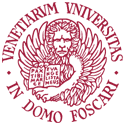HISTORY OF RUSSIAN ART
- Academic year
- 2024/2025 Syllabus of previous years
- Official course title
- HISTORY OF RUSSIAN ART
- Course code
- EM3A18 (AF:444287 AR:288258)
- Modality
- On campus classes
- ECTS credits
- 6
- Degree level
- Master's Degree Programme (DM270)
- Educational sector code
- L-ART/03
- Period
- 3rd Term
- Course year
- 2
- Moodle
- Go to Moodle page
Contribution of the course to the overall degree programme goals
The main objective is to provide students with an in-depth knowledge of the development of Russian and Soviet art within a period spanning from WWII to the end of the Soviet Union and the so-called "actually existing socialism" in the early Nineties. A particular emphasis will be given to leading tendencies, personalities and artworks, as well as to the infrastructures of the art system, including exhibitions, collections and the emergence of a Russian art market within the international context in the early post-socialist years.
Expected learning outcomes
The main objective of the course is to enhance individual skills in the following fields:
- to recognize the artworks and artists discussed in class and place them in a broader theoretical, chronological and cultural context
- to develop critical skills and analyze an artwork within its historical context from multiple perspectives, including its technical, iconographic and stylistic features
- to strengthen communication skills and acquire a vocabulary appropriate to the specific context
Pre-requirements
Contents
The course will provide a chronological overview of the arts in the USSR from late Stalinism to the emergence of unofficial Soviet art, on the basis of representative artists, artworks and tendencies.
Classes will focus on the following topics:
- Socialist realism and the severe style
- the emergence of the underground art scene
- Moscow conceptualism
- Sots-art
- the art of perestroika
- the emergence of a Russian art market in the USSR and abroad
- Russian art collections in the USSR and abroad
- the end of the Soviet Union and its impact on the national and international art systems
Referral texts
B. Groys, The Total Art of Stalinism, Princeton University Press, Princeton 1992.
The following texts on moodle:
E. Degot, Official and unofficial art in the USSR: the dialectics of the vertical and the horizontal, in RUSSIA! Nine hundred years of masterpieces and master collections, exh. cat. (Solomon R. Guggenheim Museum, New York, 16 September 2005 - 11 January 2006), Guggenheim Museum, New York 2005, pp. 365-373.
A. Erofeev, Nonofficial Art: Soviet Artists of the 1960s, in Laura Hoptman, Tomáš Pospiszyl (eds.), Primary Documents. A Sourcebook for Eastern and Central European Art since the 1950s, The Museum of Modern Art, New York 2002, pp. 37-53.
B. Groys, Moscow Romantic Conceptualism, in "A-YA", n.1, 1979, pp. 3-11.
Excerpts or chapters from the following texts, to be announced at the beginning of the course:
G. Barbieri, Matteo Bertelé, Silvia Burini S. (eds.), Dream Reality. Viktor Popkov 1932-1974, Terra Ferma, Crocetta del Montello 2014.
V. Tupitsyn, The Museological Unconscious. Communal (Post)Modernism in Russia, The MIT Press, Cambridge-London 2009.
R. Addison, K. Fowle (eds.), Exhibit Russia. The New International Decade, 1986-1996, Museum of Contemporary Art Garage, Moscow 2016.
Assessment methods
- Two artworks, among the ones commented in class and included in the uploaded slides, to be recognised, contextualised and commented.
- Two open questions about artists, artworks and topics presented in class.
The use of books, notes, and electronic media is not allowed during the exam.
For the grading scale of the exam see below.
Type of exam
Grading scale
A. Scores in the range of 18-22 will be assigned for:
Sufficient knowledge of the textbooks and related topics
Limited ability to use data and form independent judgments
Sufficient communication skills.
B. Scores in the range of 23-26 will be assigned for:
Fair knowledge of the textbooks and related topics
Fair ability to use data and form independent judgments
Fair communication skills.
C. Scores in the range of 27-30 will be assigned for:
Good or excellent knowledge of the textbooks and related topics
Good or excellent ability to use data and form independent judgments
Fully appropriate communication skills.
D. The “laude” will be awarded to students with excellent knowledge and comprehension of the textbooks and related topics.
Teaching methods
Webinars and talks with selected guests.
Possible visits to exhibitions.
The material presented in class will be available on the Moodle e-learning platform together with additional sources.
